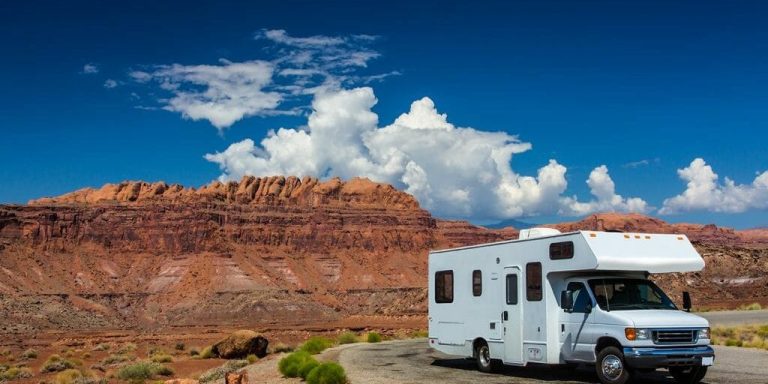So, you’re thinking about hitting the open road in an RV? Maybe you’ve seen those scenic photos of sunsets over campgrounds, or friends sharing stories of unforgettable road trips, and you’re ready to dive into the RV lifestyle. But if you’re new to RV-ing, the whole idea can feel a bit overwhelming. What kind of RV should you get? How do you pack? Where do you stay? Don’t worry — this guide will help you get started with confidence and excitement.
Why RV-ing?
RV-ing is more than just a way to travel — it’s a lifestyle that offers freedom, flexibility, and the chance to explore nature with your own “home on wheels.” You can wake up to a new view every morning, avoid expensive hotels, and bring all your favorite comforts with you. It’s perfect for families, solo travelers, couples, or friends who want to make memories on the road.
Step 1: Choosing the Right RV for You
Before you hit the road, the first big decision is: what kind of RV do you want?
- Class A Motorhomes: These are the big, bus-like RVs with plenty of space and luxury features. Great for long-term travelers but can be pricey and challenging to drive for beginners.
- Class B Camper Vans: Compact and easier to drive, these vans are perfect for solo travelers or couples who want mobility and simplicity.
- Class C Motorhomes: Recognizable by their over-the-cab sleeping area, these offer a nice balance of space and drivability.
- Travel Trailers and Fifth Wheels: These are towable RVs you attach to a separate vehicle. Great if you already own a capable truck or SUV.
If you’re new, renting an RV for a short trip can be a fantastic way to test the waters before buying. Many rental companies offer various sizes, so you can find what fits your style.
Step 2: Planning Your Route and Destinations
Unlike traditional vacations, RV trips often revolve around the journey itself as much as the destination. However, planning still helps!
- Choose Your Destinations: National parks, beaches, mountains, and forests are popular RV spots. Think about what kind of scenery and activities you enjoy.
- Check Campground Options: Many campgrounds, particularly popular RV parks near destinations like Zion National Park, often require advance reservations during busy seasons. To find available spots and read honest reviews, you can use helpful apps such as Campendium or RV Parky.
- Consider Driving Distances: New RV drivers should avoid overly long driving days. Aim for 3-4 hours on the road to stay comfortable.
Step 3: Packing Essentials
Packing for an RV trip is different from packing for a hotel stay. You have limited space, but you’ll also be living in the vehicle, so you need the right gear.
- Kitchen Supplies: Unlike a hotel room, you can cook! Bring pots, pans, utensils, a portable grill, and basic pantry items.
- Bedding and Towels: Invest in compact, quick-dry towels and comfortable bedding.
- Clothing: Pack versatile layers for changing weather conditions.
- Safety Gear: Flashlights, first-aid kits, and roadside emergency kits are must-haves.
- Outdoor Gear: Chairs, a hammock, bug spray, and a portable table make camp life cozy.
- Entertainment: Books, games, and music help pass downtime.
Step 4: Learning the Basics of RV Operation
Operating an RV involves more than just driving. Here are some basics to know:
- Driving Tips: RVs are larger and heavier than cars, so give yourself more space to stop, turn, and park.
- Water Systems: RVs have fresh water tanks, gray water tanks (wastewater from sinks/showers), and black water tanks (sewage). Learn how to fill and empty these properly.
- Electrical Hookups: Many campgrounds provide electrical connections, but knowing how to use your RV’s batteries and generator is important.
- Propane Use: Used for heating, cooking, and refrigerators in many RVs. Always check for leaks and handle propane safely.
Most RV rental companies or dealers will offer an orientation, so take notes and ask questions!
Step 5: Setting Up at the Campsite
Once you arrive, setting up your RV can feel like a mini project:
- Level Your RV: Most RVs need to be leveled for appliances to work properly.
- Connect Utilities: Hook up to water, electricity, and sewer if available.
- Extend Slide-Outs: Many RVs have slide-out sections to give you more room inside.
- Set Up Outdoor Space: Put out chairs, awnings, and grills to create a relaxing outdoor living area.
Step 6: Enjoy and Explore!
The best part of RV-ing is the freedom to explore and enjoy nature. Try hiking, fishing, stargazing, or just relaxing by a campfire. Remember to respect the environment — pack out all trash and follow campground rules.
Bonus Tips for New RV-ers
- Join RV Communities: Online forums and social media groups are great for advice and camaraderie.
- Practice Driving: Before your big trip, practice maneuvering and parking in safe areas.
- Have a Backup Plan: Technology can fail, so keep physical maps and emergency contacts handy.
- Keep it Simple: Don’t overload your itinerary. Part of RV-ing is enjoying the slow pace.
Ready to Roll?
RV-ing is an exciting way to travel, offering adventure, comfort, and flexibility. With the right preparation, even first-timers can feel confident behind the wheel and enjoy the journey. So pack your bags, plan your route, and get ready to discover the world on your own terms. Happy RV-ing!

